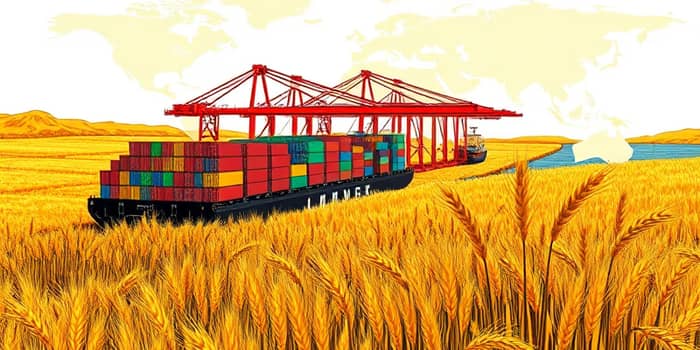
In the evolving landscape of global trade, U.S. agricultural stocks stand at the forefront of market momentum. As farmers, exporters, and policymakers navigate shifting demand patterns, the performance of agribusiness equities has never been more closely tied to international appetite. Investors seeking resilient, growth-oriented segments are increasingly turning their attention to companies that leverage export opportunities for sustainable value creation.
Export volumes are climbing as emerging markets open new doors and established partners renew long-term contracts. This article unpacks the drivers behind rising agriculture stocks, blending statistical insights with practical guidance for those looking to capitalize on this dynamic sector.
The outlook for U.S. agricultural exports has never been more compelling. For FY 2025, total exports are projected at $170.5 billion, up on the back of robust grain, feed, livestock, and dairy shipments. Core markets such as Mexico remain steadfast buyers, while Southeast Asia and the Middle East represent fresh avenues for growth.
Agribusiness firms with global supply chains are capitalizing on robust export currents. When grain and feed prices rally, companies that handle large volumes tend to deliver more consistent shareholder returns and often outpace peers in earnings seasons. Major players such as ADM, Bunge, and Cargill have reported back-to-back quarters of revenue growth driven by international sales.
Export-driven momentum also benefits equipment and input suppliers. As farmers expand acreage or adopt advanced technologies, they increase orders for seeds, fertilizers, and machinery. This ripple effect underscores why diversified agribusinesses and efficient supply chains attract premium valuations in bullish export cycles.
No growth story is without its headwinds. While export demand surges, U.S. agriculture is faced with stiff competition from South American producers. Brazil and Argentina have ramped up soybean and grain exports, often undercutting prices with favorable currency and lower production costs.
At the same time, rising agricultural imports into the U.S.—projected to reach $219.5 billion—widen the trade deficit. Though this imbalance is a macroeconomic consideration, it seldom dampens the performance of export-oriented stocks in the near term. Savvy investors weigh these dynamics carefully, focusing on companies with the agility to navigate currency shifts, tariff adjustments, and evolving trade policies.
Technological advancement is rewriting the playbook for U.S. farms. By 2025, over 60% of domestic operations are expected to integrate precision agriculture tools, leveraging data analytics, satellite imagery, and real-time monitoring. These innovations not only boost yields but also reduce input waste, elevating profitability on a per-acre basis.
At the same time, sustainability initiatives and supply chain traceability have become critical for securing high-value contracts. Buyers in Europe, Asia, and the Middle East are increasingly demanding certifications for regenerative practices and carbon footprint tracking. Companies that invest in digital platforms for transparent product origin tracking gain a competitive edge in these discerning markets.
For investors aiming to harness export-driven tailwinds, strategic allocation is key. Start by identifying companies with robust international networks and flexible logistics systems. These operators can pivot quickly to capture shifting demand signals and mitigate port or shipping disruptions.
Equally important is diversification across subsectors. Consider balancing investments in commodity handlers with those in agritech, such as precision equipment manufacturers and biotechnology firms. This blend captures both cyclicality in crop pricing and secular growth in farm modernization.
Rising global demand for U.S. agricultural products offers a compelling narrative for investors. With export volumes climbing, commodity prices firming, and innovation driving efficiency, agriculture stocks are positioned to deliver sustained value. By embracing a combination of data-driven insights, thematic diversification, and a keen eye on trade dynamics, investors can confidently navigate this fertile landscape.
Whether you are building a core portfolio position or seeking opportunistic gains, the export engine powering U.S. agriculture provides a unique avenue for growth. Embrace the trends, assess the risks, and plant the seeds for long-term success in the dynamic realm of agribusiness investing.
References













